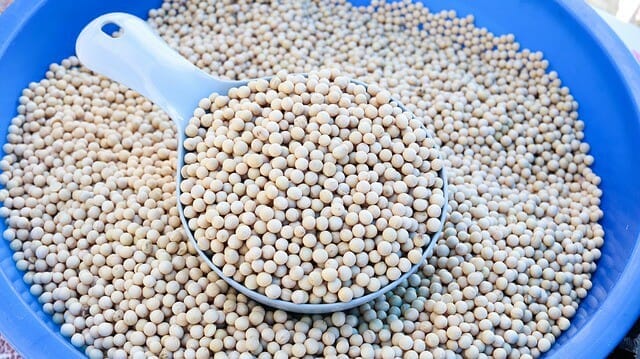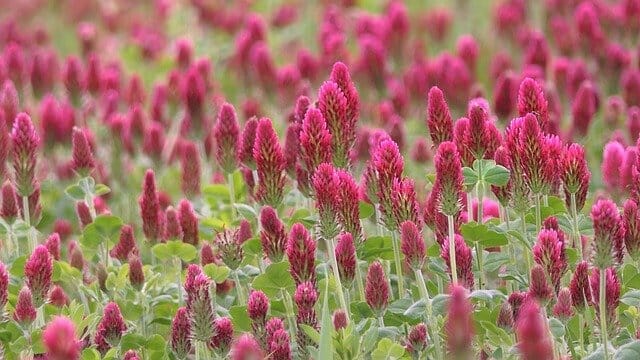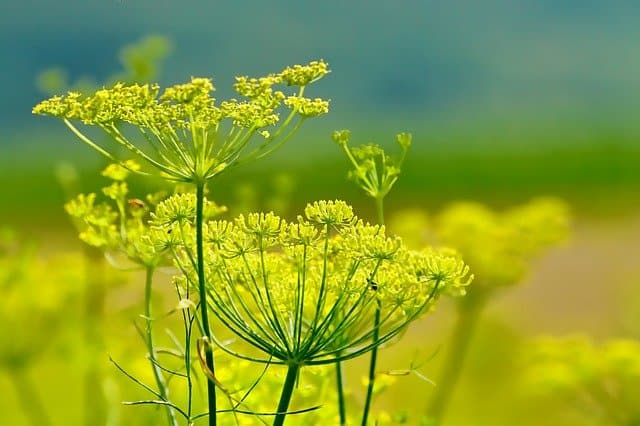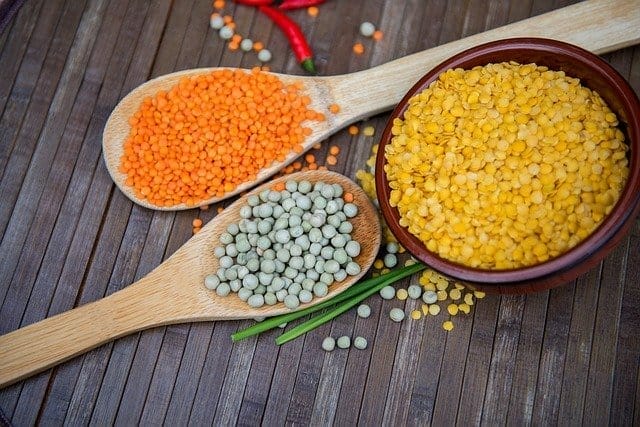Phytoestrogens are plant substances with extraordinary properties. By normalizing the level of hormones in our body, they relieve us from annoying symptoms and positively affect our mood. They may also improve our beauty in many aspects, including bust modelling. Phytoestrogens are found in many herbs, they can also be found in some foods. Concentrated extracts from plants rich in phytoestrogens are also included in numerous dietary supplements for women. Learn more about the properties of phytoestrogens, check when to use them and what are their richest sources.
Table of contents
- 1 Plant hormone providers – the importance of phytoestrogens for our body
- 2 Foods containing phytoestrogens, estrogens in food
- 3 Progesterone in the diet, products rich in progesterone
- 4 Phytoestrogens – properties and effects
- 5 Phytoestrogens and the menstrual cycle
- 6 Phytoestrogens and menopause
- 7 Phytoestrogens – the risks
- 8 Phytoestrogens – tablets and capsules. A natural way to deal with women’s problems
Plant hormone providers – the importance of phytoestrogens for our body
In plant organisms, as in the human body, substances are produced, whose task is to regulate the processes of growth and development. In humans these are hormones, in plants – phytohormones. It turns out that due to their identical structure and mode of action, phytohormones can perform the same functions in the human body as their own hormones. This applies mainly to female sex hormones, including the most important female hormones, estrogen.
There is a large group of plants (including various herbs, vegetables, fruits, cereals) equipped with estrogen equivalents, i.e. phytoestrogens. These unique organic compounds mimic estrogen, and thus contribute to regulating the concentration of female hormones in the body. By restoring hormonal balance, they improve the functioning of the reproductive system and help get rid of ailments that resulted from low estrogen levels.
At the same time, phytoestrogens also perform other functions, for which estrogen is naturally responsible in our body. They improve the functioning of practically the whole system, including: regulating body weight, reducing the risk of cardiovascular diseases, some cancers and osteoporosis, and have a positive effect on mood and appearance.
Foods containing phytoestrogens, estrogens in food

The richest source of female sex hormone equivalents are legume seeds, including but not limited to soybeans. The role of phytoestrogens in this plant performs isoflavones belonging to the group of bioflavonoids, such as genistein, daidzein and glycitein.
Due to their good bioavailability and action analogous to human hormones, soy isoflavones may be an effective way to normalize hormone balance and reduce the agonizing symptoms associated with hormone deficiency (e.g. in menopause).
The content of isoflavones in soy may vary, depending on the product we are dealing with. Soy flour, soy flakes, isolated soy protein, and soy beans contain the most isoflavones.
Soy products such as tofu, tempeh, soy sprouts, soy beverages, soy yogurt, and soy pasta contain smaller amounts of isoflavones.
In addition to isoflavones, other plant substances play the role of phytoestrogens, among which lignans are particularly important. Both in terms of structure and functions, lignans are biologically compatible with estrogens, which allows them to perform the same work in the system and eliminate hormonal disorders. A very rich source of lignans is flaxseed and flax flour.
Another group of phytoestrogens are coumestans, present in beans, soybeans, alfalfa, among others.
Among the best sources of phytoestrogens are also numerous herbs, including one of the most common meadow and field plants – red clover.
Foods containing plant estrogens (phytoestrogens)
- Flaxseed,
- soybeans,
- lentils,
- hummus,
- peas,
- beans,
- broad beans,
- flaxseed oil,
- sunflower seeds,
- sesame,
- nuts and almonds,
- oatmeal, rye flakes and other cereals,
- bran,
- rice,
- sprouts,
- grapes,
- red wine,
- apples,
- pears,
- dried apricots,
- cherries,
- cherries,
- blueberries,
- mulberries,
- spinach,
- garlic,
- onions,
- squash,
- broccoli.
Herbs containing phytoestrogens
- red clover,
- wild yam,
- hops,
- fennel,
- fenugreek,
- white willow,
- angelica,
- green tea,
- alfalfa,
- Pueraria mirifica,
- black mallow.
Progesterone in the diet, products rich in progesterone

The most important female sex hormones are estrogen, progesterone and prolactin. Estrogen is responsible for shaping sexual characteristics and the female figure (including breast growth) and regulating the menstrual cycle. And one of the main functions of prolactin is breast milk production after childbirth.
Progesterone, on the other hand, is a hormone especially important for pregnant women and those who are planning motherhood soon. Progesterone is necessary for ovulation to occur, it allows the fertilised egg to implant in the uterus and is responsible for maintaining the pregnancy. What is more, progesterone together with estrogen guards the regularity of menstruation and the correct length of the cycle.
Some women experience progesterone deficiency, which can manifest as irregular menstrual periods, as well as fertility problems and the inability to get and maintain a pregnancy. It is up to the doctor to decide whether to start taking progesterone. However, many people are interested in natural ways to balance the levels of this hormone. How to raise progesterone levels with food?
In normalizing the level of progesterone in the body can help us phytohormones found in herbs such as wild yam, monk’s capsicum, red clover. Although the primary function of these substances is to regulate estrogen levels, they can also positively affect progesterone levels. In general, phytohormones optimize the concentration of both of these hormones and help restore the proper balance between them.
To increase the level of progesterone, it is also worth introducing into the diet increased amounts of foods rich in such ingredients as:
- vitamin E,
- vitamin B6,
- vitamin C,
- dietary fiber,
- zinc,
- magnesium,
- omega 3 acids,
- L-arginine.
Phytoestrogens – properties and effects
Phytoestrogens support the endocrine system, helping restore the proper level of particular sex hormones. Thus, they normalize libido, regulate reproductive functions, enhance female characteristics in appearance, and prolong youth.
Phytoestrogens also exhibit a number of other valuable properties, such as:
- antioxidant properties,
- bacteriostatic properties,
- anti-allergenic,
- anti-inflammatory,
- antiviral and antifungal properties,
- support of the skeletal system, protection against osteoporosis,
- reducing the risk of cancer (especially hormone-related cancers such as breast cancer),
- regulating blood pressure,
- lowering the level of bad cholesterol,
- improving carbohydrate metabolism,
- positive effect on blood vessels,
- reducing the risk of cardiovascular disease (e.g. arteriosclerosis),
- slowing down ageing processes,
- support of the nervous system,
- improving skin condition,
- protection of collagen fibres, inhibition of wrinkle formation and deepening.
Phytoestrogens and the menstrual cycle
Since phytoestrogens, after entering our system, show the same activity as human sex hormones (slightly weaker, but identical), they may be helpful for women who want to normalize their menstrual cycle in a natural way. When estrogen and progesterone levels in the body are abnormal, menstrual disorders may occur (e.g. periods appear irregularly, cycles are too short or too long, bleeding is too scanty or too intense). Phytoestrogens, similarly to estrogens, bind with estrogen receptors of hypothalamic neurons and influence ovarian function. By stimulating their work, they stabilize the frequency and abundance of bleeding.
Phytoestrogens and menopause

Natural phytoestrogen treatment may be an effective support for women in the peri-menopausal period and an alternative to the so-called hormone replacement therapy. As we know, with age the level of estrogen in women decreases, which results in a gradual cessation of ovarian function, menstruation and loss of reproductive capacity.
Menopause is a difficult time for most women. Due to hormonal turbulences we have to face many unfavourable symptoms, such as: mood swings, hot flashes, headaches, notorious fatigue, sleep disorders, irritability, drenching sweats, problems with concentration, palpitations, low libido, crying fits, fear and anxiety.
All these troublesome symptoms may be alleviated by using herbs or preparations with phytoestrogens, which being an imitation of estrogens and behaving in our body like they do, help us regain hormonal balance and feel good.
Phytoestrogens – the risks
Phytoestrogens are substances derived from plants, so they affect our body in a delicate way, according to our natural rhythm. However, this does not change the fact that they show biological activity, influence the hormonal system and numerous processes occurring in our body. Generally they are safe substances and do not carry the risk of negative side effects. However, if we struggle with more serious hormonal disorders or suffer from some diseases, we should consult a doctor before starting a phytoestrogen treatment.
Phytoestrogens – tablets and capsules. A natural way to deal with women’s problems
There is a large group of dietary supplements, the formula of which is based on phytoestrogens. Depending on the type of our problem and the purpose of phytoestrogen treatment we may be helped by
- preparations alleviating menopause symptoms (e.g. Climea Forte),
- preparations increasing female libido and improving vaginal lubrication (e.g. Femin Plus),
- preparations firming and increasing bust volume (e.g. BoomBreast, Maxi Bust).
Read also: What stimulates bust growth?
Sources:
https://pubmed.ncbi.nlm.nih.gov/25160742/
https://www.healthline.com/health/phytoestrogens
https://www.medicalnewstoday.com/articles/320630
https://www.medicalnewstoday.com/articles/317516
https://www.medicalnewstoday.com/articles/320266

